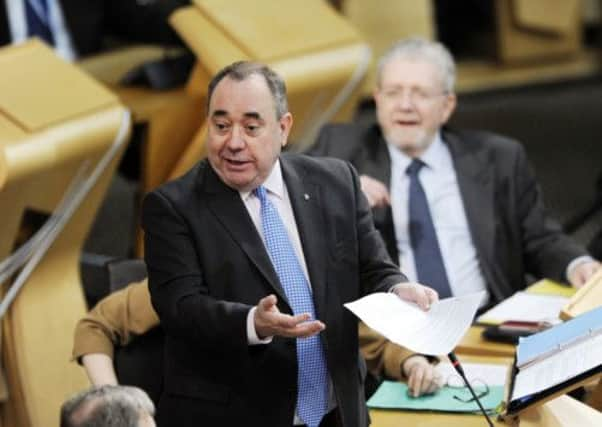Eddie Barnes: Reality check needed on welfare costs


A good example is over the claims surrounding the affordability of welfare in an independent Scotland. Salmond and his finance secretary, John Swinney, have been using a new line in recent weeks, arguing that “as a proportion of our national income”, Scotland spends less money on social protection than the rest of the UK. Ergo, benefits in an independent Scotland would be more affordable.
The claim is helped along by the Scottish Government’s old statistical ally – the definition of GDP. As the Yes Scotland website notes correctly: “Social protection expenditure accounted for 14.4 per cent of GDP in Scotland and 15.9 per cent in the UK in 2011-12.”
Advertisement
Hide AdAdvertisement
Hide AdBut what is meant by GDP? As the Centre for Public Policy in the Regions (CPPR) helpfully explained earlier this year, Scotland’s GDP – the sum total of everything produced in the country – includes the vast sums being extracted from the North Sea. Of course, billions of that would flow to a future Scottish exchequer in tax revenues helping to top up the cost of the country’s welfare state. But billions would also – as they do at present – flow abroad to the foreign owned companies that do much of the extracting.
Using Scotland’s inflated GDP as a measure for Scotland’s wealth is, the CPPR’s academics concluded, “a red herring”. As usual with statistics, it boils down to the baseline you choose; another economist, Professor David Bell of Stirling University has a new paper showing that, in 2010-11, spending on social protection per head was £3,972 in Scotland and £3,658 for the UK. Does this show welfare would be more affordable?
The statistical smokescreens being erected around these issues are just one part of the problem in the debate, however. All the above figures on welfare affordability suffer from the flaw of looking backwards. And the dogs on the street now know that, irrespective of the decision next year, tough choices are facing a welfare spending programme that, in Scotland, has increased by 78 per cent in the ten years to 2012 – a real increase of 23.2 per cent. Does anyone have a plan to ensure that this upward curve can be maintained at a time when economic growth is likely to be so miserly?
The Scottish Government’s own Fiscal Commission declared that the key challenges for Scotland are likely to be maintaining credibility in debt markets, and its ability to make long-term plans to boost onshore tax revenues and cut expenditure.
But as the referendum roadshow winds up for the summer, it doesn’t look like the reality of the world around it is going to get a look in. Instead, the voting public can look forward to a few more rounds of stato wars. Phoney? The First Minister has hit the nail on the head.